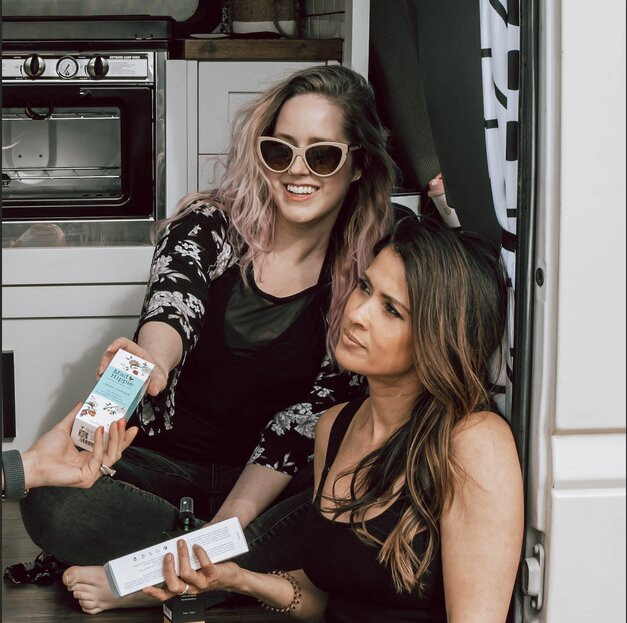If you’re ready to advance beyond our Skincare 101 series (learning about cleansers, moisturizers, and sun protection), it’s time to move on to Skincare 102 series where we explain toners, eye treatments, facial oils & serums.
This series is meant to help educate you on the products in your skincare routine, how they should be applied, and when they should be applied. Additionally, we’ll tell you what these products do, what their benefits are, and which one is best for different skin states.
This post will help you better understand the most common third step in an optimal skincare routine: Oil + Serum Treatments!
SO WHAT’S THE POINT OF THE TREATMENT STEP?
The treatment step usually comes after your toner and before your moisturizer. Skincare treatments tend to have targeted ingredients in them that help with specific skin concerns (acne, hyperpigmentation, sagging, wrinkles, etc). These products are thinner in consistency than moisturizers and often have the most potent, active skincare ingredients in your regimen. The style of treatment product that’s best for you is generally based on your skin state, the skin concern you have, and, for our more advanced clients, the type of formulation preferred. The most common treatment products are oils + serums. While these two styles of treatments are wonderful when used on their own, they can also boost the benefits of each other when combined. For example, our favorite dynamic duo is any oil teamed up with hyaluronic acid.
OILS
Best for: All skin conditions
Your skin’s natural moisture barrier is made of both oil and water. Finding the right weight of oil for you is one of the most beneficial ways to balance your skin, even if you have acne!
When applied to damp skin, oils seal water into your skin. This helps dry skin fight wrinkles, fine lines, collagen loss, tightness, and flaking. In oily skin, this can prevent acne, diminish scars, smooth pores, and slow overproduction of the skin’s natural oil (sebum).
Many oils have beneficial components that are associated with the different plants they’re extracted from. For example, jojoba, grapeseed, and squalane are all examples of oils that help oily skin control the production of sebum; almond and marula oils help lock in moisture to dry skin types and calm the irritation of inflammatory disorders like eczema and psoriasis; acne-prone skin responds well to pomegranate and rosehip oils; and manuka honey and sea buckthorn are great for brown spots/hyperpigmentation.
Oils are generally applied through a dropper or pump application. The product should be dropped/pumped into the hand, then warmed by rubbing the hands together. After which, the product should be rubbed into the face and neck (using upward motions on the neck). Dropping/pumping products directly on to your face is never recommended as products spread and absorb better when warmed.
SERUMS
Best for: All skin conditions
Serums are usually water-based and have consistencies anywhere from liquid to gel. Because serums usually contain higher concentrations of active ingredients, they are the most expensive product in most skin care lines. Serums also tend to be made up of ingredients with smaller molecules than those found in moisturizers, so they are able to travel to deeper layers of the skin. Since these formulations are so concentrated, just a few drops will do the trick.
Just as with oils, your serum choice should be tailored to your skin’s individual needs. Those with dry and/or sensitive skin should look for serums containing ceramides, which help protect against moisture loss. Aging skin responds well to peptides that help firm sagging skin and soften the appearance of fine lines & wrinkles. Vitamin C serums are a great choice for those with hyperpigmentation. Oily & acne prone skin will benefit from serums containing alpha hydroxy acids (AHAs) like glycolic and lactic acid, or beta hydroxy acids (BHAs) like salicylic acid as (AHAs helps balance oil production & BHAs help dissolve clogs pores and reduce the appearance of pore size). And every skin state can benefit from a hyaluronic acid serum, especially when combined with an oil treatment.
Similarly to oils, serums are generally applied through a dropper or pump application. The product should be dropped/pumped into the hand, then warmed by rubbing the hands together. After which, the product should be rubbed into the face and neck (using upward motions on the neck). Again, dropping or pumping products directly on to your face is never recommended as products spread and absorb better when warmed.
If you’re not sure of the different states of your skin, or choosing the right oil formulation for your skin, don’t worry – we spent months figuring out how our software can best capture the different states of your skin. Make sure to set up your profile if you haven’t already by visiting our homepage, and we’ll be happy to help you find treatments that are best for your skin (plus, all of our new customers get a discount off of their first order)!
Hopefully we have made the treatment step in your routine a little easier to navigate, and piqued your interest about trying products you haven’t previously considered adding to your routine. Up next in our Skincare 102 series: Eye Treatments.
To see any of the other posts in our Skincare 101 & 102 series, click on any of the links below:


